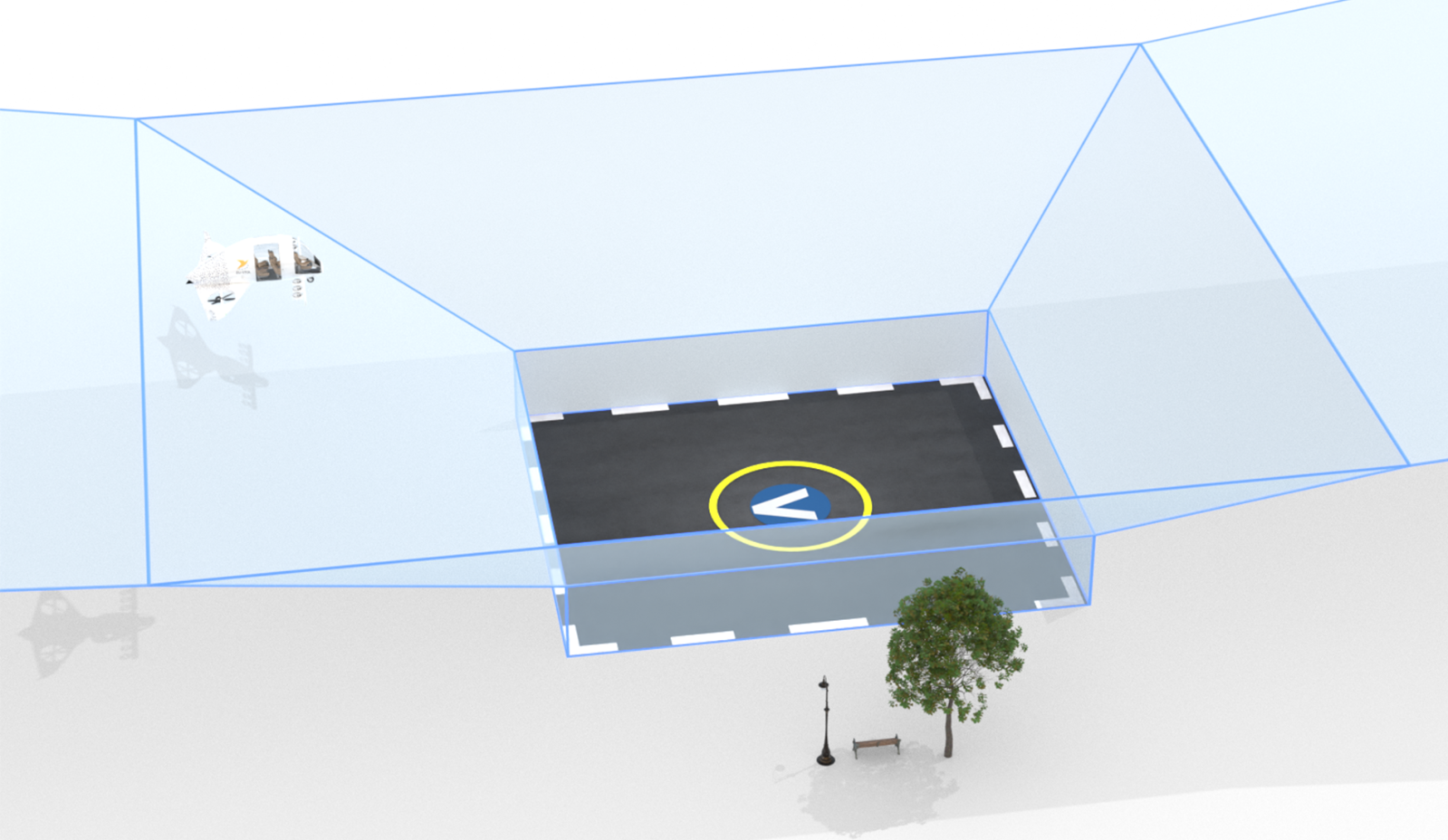
The European Union Aviation Safety Agency (EASA) has become the first air transport safety regulator in the world to offer technical design guidance to urban planners and eVTOL manufacturers looking to build drone taxi vertiports across Europe.
In a document titled “Prototype Technical Design Specifications for Vertiports,” EASA describes in detail the physical characteristics of a vertiport, the required obstacle environment, visual aids, lights and markings, as well as concepts for en-route alternate vertiports for continued safe flight and landing. Special attention has been paid to congested urban environments in the document since many drone taxi vertiports will be built within or close to European cities.
One notable innovation in EASA’s guidance is the concept of a funnel-shaped area above the vertiport, designated as an “obstacle-free volume.” The agency explains:
This concept is tailored to the operational capabilities of the new VTOL aircraft, which can perform landing and take-off with a significant vertical segment. Depending on the urban environment and on the performance of certain VTOL-capable aircraft, omnidirectional trajectories to vertiports will be also possible. Such approaches can more easily take account of environmental and noise restrictions and are more suitable for an urban environment than conventional heliport operations, which are constrained in the approaches that can be safely applied.
Also read: World’s longest 165-mile ‘drone superhighway’ proposed in the UK
EASA’s executive director, Patrick Ky, admits that urban air mobility (UAM) is a completely new field of aviation that has provided the regulator with a unique opportunity to develop a set of infrastructure requirements from scratch.
This is why EASA made sure to include experts from EU members states, as well as the world’s leading vertiport companies and VTOL manufacturers, while drafting this guidance. Here’s Ky:
With the world’s first guidance for safe vertiport operations, EASA’s ambition is to provide our stakeholders with the ‘gold standard’ when it comes to safe vertiport design and operational frameworks. By harmonizing design and operational standards for vertiports we will support European industry, who are already starting to embark on exciting projects in Europe and around the world to make new urban air mobility a reality.
The next step for EASA is a full-scale rulemaking task (RMT.230) during which the agency will detail the full spectrum of regulatory requirements to ensure safe drone taxi vertiport operations.
These will include not only detailed design specifications but also requirements for authorities to oversee vertiport operations as well as organizational and operational requirements for vertiport operators.
Read more: Even kids are donating their drones to Ukraine
FTC: We use income earning auto affiliate links. More.





Comments